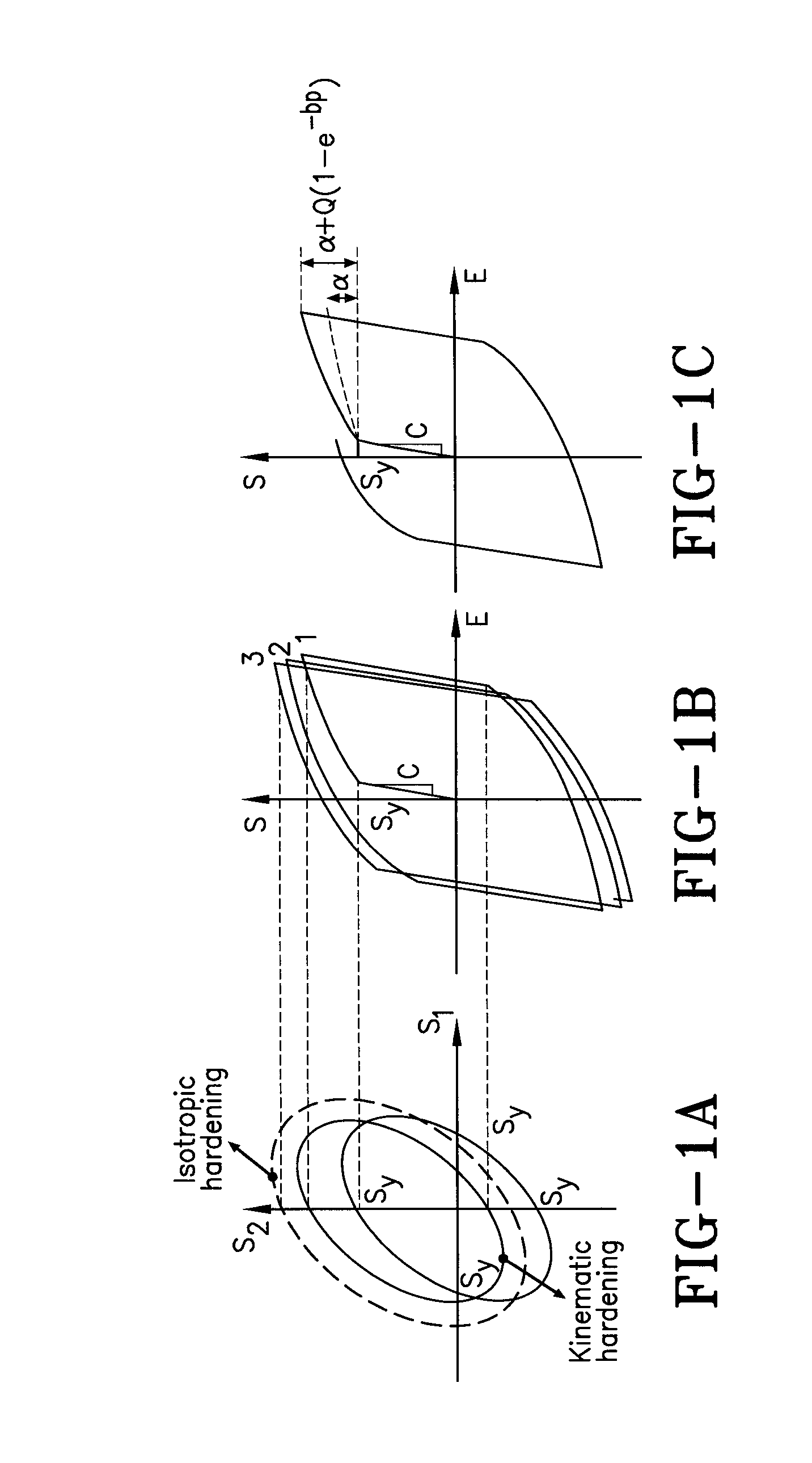Self-optimizing, inverse analysis method for parameter identification of nonlinear material constitutive models
a nonlinear material and parameter identification technology, applied in the direction of non-denominational number representation computation, design optimisation/simulation, instruments, etc., can solve the problems of requiring costly equipment, requiring a substantial amount of computational time of the computer system, and becoming more difficult to determine the values of such parameters
- Summary
- Abstract
- Description
- Claims
- Application Information
AI Technical Summary
Benefits of technology
Problems solved by technology
Method used
Image
Examples
Embodiment Construction
[0025]The present invention comprises a self-optimizing inverse analysis method (Self-OPTIM) for the identification of parameters of any suitable material constitutive model. That is, the method contemplated herein can be carried out independently of the type of constitutive model being utilized. For the purposes of the following discussion, the Self-OPTIM method is used to identify parameters of a cyclic plastic constitutive model having a nonlinear kinematic hardening law that simulates the inelastic behavior of a material under cyclic loadings.
[0026]In order to carry out the Self-OPTIM method contemplated by the present invention to identify the constitutive parameters of the cyclic plastic constitutive model, a user material model subroutine (UMAT) is implemented. The chosen elasto-plasticity constitutive model represented by the UMAT subroutine can reproduce both nonlinear isotropic and kinematic hardening behavior, which is commonly observed in metallic materials, but is not l...
PUM
 Login to View More
Login to View More Abstract
Description
Claims
Application Information
 Login to View More
Login to View More - R&D
- Intellectual Property
- Life Sciences
- Materials
- Tech Scout
- Unparalleled Data Quality
- Higher Quality Content
- 60% Fewer Hallucinations
Browse by: Latest US Patents, China's latest patents, Technical Efficacy Thesaurus, Application Domain, Technology Topic, Popular Technical Reports.
© 2025 PatSnap. All rights reserved.Legal|Privacy policy|Modern Slavery Act Transparency Statement|Sitemap|About US| Contact US: help@patsnap.com



